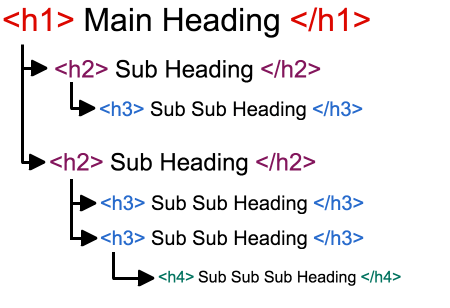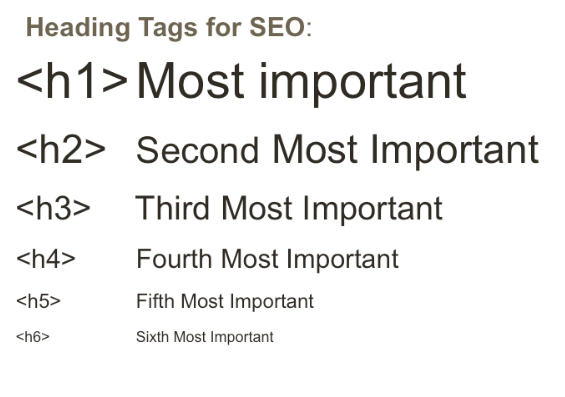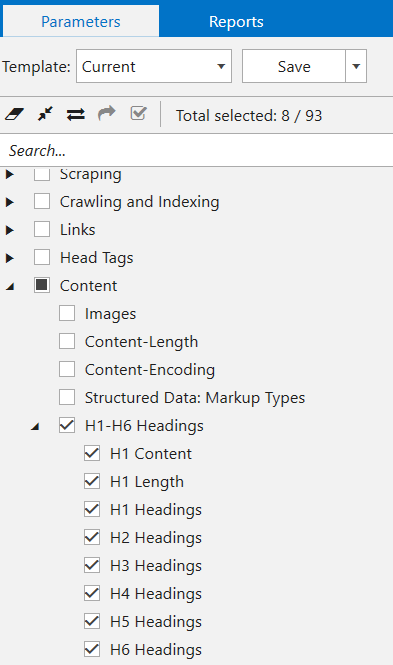How to Use HTML Headers for Better SEO Performance
How to
HTML headers are used to structure the content of the webpage to make it coherent for search robots and human users. Let's see how to use HTML headings most effectively. Spoiler alert: it is easier than it seems.
- 1. What Are HTML Headers?
- 2. How HTML Header Tags Work for SEO [and Humans]
- 3. What Is the HTML Heading Structure?
- 4. How to Write SEO-Friendly HTML Headings?
- 5. How to Optimize Headings for Featured Snippets
- 6. How to Find H1-H6 on Your Website with a Crawler
- Let’s Recap
1. What Are HTML Headers?
HTML headers are used to tell the headers (h1) and subheaders (h2-h6) apart from the rest of the text. The difference between these tags is in their top-down hierarchy:
- <h1> is a top-level header tag
- <h2-h6> are a subheaders
The higher the level, the more important the block after the header is considered. Thus, the <h6> tag will be the least significant title of all presented. In turn, the <h1> tag dominates all these tags and is often used as a title of an actual page:
This tag is the second most important for SEO promotion since the first is the title tag, which defines the title of the page and is used as a display feature for a snippet in search results.
HTML headings are used to structure the content of the page. The entire blanket of the text split into logical parts is perceived easily by both users and search robots.
2. How HTML Header Tags Work for SEO [and Humans]
It’s no denying that HTML headers contribute to the readability and clarity of the text. By dividing important information into logical chunks you provide coherence that will work as focal points for the human restless mind.
Let me elaborate on this a bit more. How often do you yourself peruse every single word of the long-read? You most likely scroll down the article clinging to the bigger parts – the headers – to get the gist of what this article is about to decide whether it meets your expectations or not. And if it does, you start looking for other details.
So this understanding of human behavior peculiarities is another good reason to use a clear structure.
Okay, this is how it works for humans. But you may wonder how SEO benefits from it.
The main Google’s tune is to reinforce user experience by providing quality content. So user behavior on your page counts – the time they spend, how deep they scroll, whether they receive the answer to their query, or bounce off immediately.
Apart from user behavior, search robots would also appreciate a well-structured text with headers and subheaders. They see the text within H1-H3 as the text of higher priority that deserves more attention. This is what Google’s adept, John Mueller, said once:
Another purpose of HTML heading tags is that you can include relevant keywords here. Since this text is marked with ‘higher priority,’ and Google bounces it off users’ search intent. H1 tag is the most important place where you can use keywords.
Note that spamming across the text with keywords will give you nothing more than a ban from Google. Don’t try to thrust keywords into your headers at all costs. First and foremost, write for humans, not for robots.
3. What Is the HTML Heading Structure?
HTML headings structure is a sequence of headers and subheaders. Here is an example of a heading structure that you can stick to.

The title of the webpage should be close to the beginning of the page. The higher the title, the greater its value compared to other elements on the page. The desired header length should be no more than 60 characters. It is due to search engines that accept a certain number of characters.
4. How to Write SEO-Friendly HTML Heading?
Most of the recommendations are based on the rule of thumb and sheer observation since there is no evidence of definite rules set by Google.
- Use one <h1> tag on the page. And disclaimer goes on the spot: though it’s recommended to use only one <h1> tag, multiple HTML headers won’t do any harm since modern sites are predominantly built on HTML5 code.
- Use keywords that you target for. To find your target keywords do a bit of keyword research into your niche, and analyze what words people use when they search for the answer.
- Optimize for long-tail keywords (or LSI keywords). The <h1> tag should not only consist of primary keywords (high-frequency keywords). It is better to dilute them with long-tail keywords. Thanks to Natural Language Processing (NLP), you can use synonyms and related words because machines are learning to understand natural human language.
- The header with the <h1> tag should be the largest, while the rest of the <h2>...<h6> headers should be smaller in the size. The size varies depending on the level. The lower the level, the smaller the size of the header:
- The page structure must have a hierarchy. That is, you cannot first use the header <h1>, and then immediately spring to the <h4> or <h5>. After the first level comes the second one (<h1>, then <h2> and so one).
- Make them concise, but fetching. That’s it. Remember that headers in the article are similar to chapters in a book – they should kindle intrigue and willingness to dig further.

5. How to Optimize Headings for Featured Snippets
Google may (or may not) independently craft featured snippets (‘answer box’ that appears on the #0 position) based on your HTML headings. It relates to the bulleted or numbered lists in the featured snippets. They usually go in the form of how-to answers.
To get into the answer box, think from the SEO bent:
- Sprinkle primary keywords over HTML headings along with LSI keywords as this will increase the relevance of the page for specific queries. Make unique and informative headlines so your users can get key information from future snippets.
- Stick to a length of not more than 60 characters. The rest of the text will be ripped off in the search results. The <h1> tag should encourage reading the article, so it’s recommended that you use catchy words when creating it.
- If you write a guide, use ‘how-to’ steps, each in a new header.
6. How to Find H1-H6 on Your Website with a Crawler
You can see h1-h6 with a human eye on each page separately. But if you throw a huge content optimization campaign on the website and it has hundreds of old pages – you’ll fall into the doldrums flicking through them manually. This is when you can automate the process with Netpeak Spider.
You can collect and analyze HTML headers even in the free version of Netpeak Spider crawler that is not limited by the term of use and the number of analyzed URLs. Other basic features are also available in the Freemium version of the program.
To get access to free Netpeak Spider, you just need to sign up, download, and launch the program 😉
Sign Up and Download Freemium Version of Netpeak Spider
P.S. Right after signup, you'll also have the opportunity to try all paid functionality and then compare all our plans and pick the most suitable for you.
So here we go:
- Launch Netpeak Spider.
- Enter a website’s URL into the ‘Initial URL’ field.
- Go to the parameters in a sidebar and find the ‘Content’ group → select ‘H1-H6’ (or the ones that you need).
- Start crawling.
- Voila! All the results are gathered in the main or database table, which you can export into Excel tables or Google spreadsheets (Pro feature) for further work.


Let’s Recap
Though HTML headers are important for a range of sensible reasons, it won’t result in fantastic SEO uplifts. The presence of the correct HTML heading tags will increase chances for top positions in search results.
Remember to use the keywords in h1-h3. Keywords are important but don’t create a clunky piece just to impress Google. Don’t put your users’ experience on stake since it won’t pay off.



